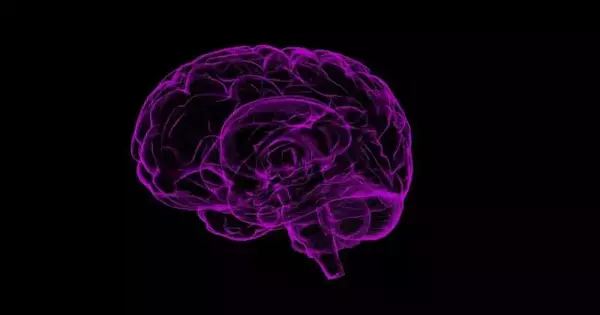According to a recent Penn Medicine study, the development of the brain does not occur uniformly throughout the brain but rather follows a newly discovered developmental sequence. Young people are sensitive to socioeconomic environments through adolescence because brain regions that support cognitive, social, and emotional functions appear to remain malleable—or capable of changing, adapting, and remodeling—longer than other brain regions. Recently, the results were published in Nature Neuroscience.
Researchers used magnetic resonance imaging (MRI) to map how developmental processes progress throughout the human brain from 8 to 23 years old. The results point to a fresh way of thinking about how and when specific brain regions lose plasticity during development.
The term “brain plasticity” describes the ability of neural circuits, or the connections and pathways in the brain that control thought, emotion, and movement, to adapt or reorganize in response to internal biological signals or the environment. Although it is generally accepted that children’s brains are more plastic than adults’, this study offers fresh information on the locations and timing of plasticity declines in the brain during childhood and adolescence.
“It is difficult to study brain development in the living human brain.” Rodent research have contributed significantly to neuroscientists’ understanding of brain plasticity during development. However, because rodent brains lack many of the human brain’s connection regions, scientists know less about how these critical areas evolve.”
Author Theodore D. Satterthwaite, MD, the McLure Associate Professor of Psychiatry
According to the findings, brain plasticity declines first in “sensory-motor” regions like the visual and auditory regions and later in “associative” regions like those involved in higher-order thinking (problem solving and social learning). As a result, early adolescence appears to be a particularly malleable and responsive period for the executive, social, and emotional brain regions, as plasticity happens later in development.
It can be difficult to research brain growth in a human brain that is still developing. A lot of neuroscientists’ understanding about brain plasticity during development actually comes from studies conducted with rodents. Theodore D. Satterthwaite, MD, the McLure Associate Professor of Psychiatry in the Perelman School of Medicine at the University of Pennsylvania and director of the Penn Lifespan Informatics and Neuroimaging Center (PennLINC), said: “Rodent brains, however, do not have many of what we refer to as the association regions of the human brain, so we know less about how these important areas develop.
In order to overcome this difficulty, the researchers compared findings from earlier rodent studies with findings from young people’s MRI imaging. Brain plasticity is associated with a particular pattern of “intrinsic” brain activity, according to earlier research that looked at how neural circuits function when they are flexible.
Intrinsic activity is the neural activity occurring in a part of the brain when it is at rest or not being engaged by external stimuli or a mental task. There is typically more intrinsic and more synchronized activity in a brain region when it is less developed and more plastic. This is a result of the area’s higher density of active neurons, many of which are also active at the same time.
“Imagine that individual neurons within a region of the brain are like instruments in an orchestra. As more instruments begin to play together in synchrony, the sound level of the orchestra increases, and the amplitude of the sound wave gets higher,” said first author Valerie Sydnor, a Neuroscience Ph.D. student.
“Just like decibel meters can measure the amplitude of a sound wave, the amplitude of intrinsic brain activity can be measured with functional MRI while kids are simply resting in the scanner. This allowed our team to study a functional marker of brain plasticity safely and non-invasively in youth.
Analyzing MRI scans from more than 1,000 individuals, the authors found that the functional marker of brain plasticity declined in early childhood in sensory-motor regions but did not decline until mid-adolescence in associative regions.
“These slow-developing associative regions are also those that are vital for children’s cognitive attainment, social interactions, and emotional well-being,” Satterthwaite added. “We are really starting to understand the uniqueness of the human’s prolonged developmental program.”.
“If a brain region remains malleable for longer, it may also remain sensitive to environmental influences for a longer window of development,” Sydnor said. “This study found evidence for just that.”.
The authors studied relationships between youths’ socioeconomic environments and the same functional marker of plasticity. They found that the effects of the environment on the brain were not uniform across regions or static across development. Rather, the effects of the environment on the brain changed as the identified developmental sequence progressed.
Critically, youths’ socioeconomic environments generally had a larger impact on brain development in the late-maturing associative brain regions, and the impact was found to be greatest in adolescence.
“This work lays the foundation for understanding how the environment shapes neurodevelopmental trajectories even through the teenage years,” said Bart Larsen, Ph.D., a PennLINC postdoctoral researcher and co-author.
Sydnor elaborated, “The hope is that studying developmental plasticity will help us understand when environmental enrichment programs will have a beneficial impact on each child’s neurodevelopmental trajectory. Our findings support the notion that programs designed to alleviate disparities in youths’ socioeconomic environments remain important for brain development throughout the adolescent period.”. As a result, measurements of brain activity waves show an increase in amplitude (or height).
More information: Valerie J. Sydnor et al, Intrinsic activity development unfolds along a sensorimotor–association cortical axis in youth, Nature Neuroscience (2023). DOI: 10.1038/s41593-023-01282-y





